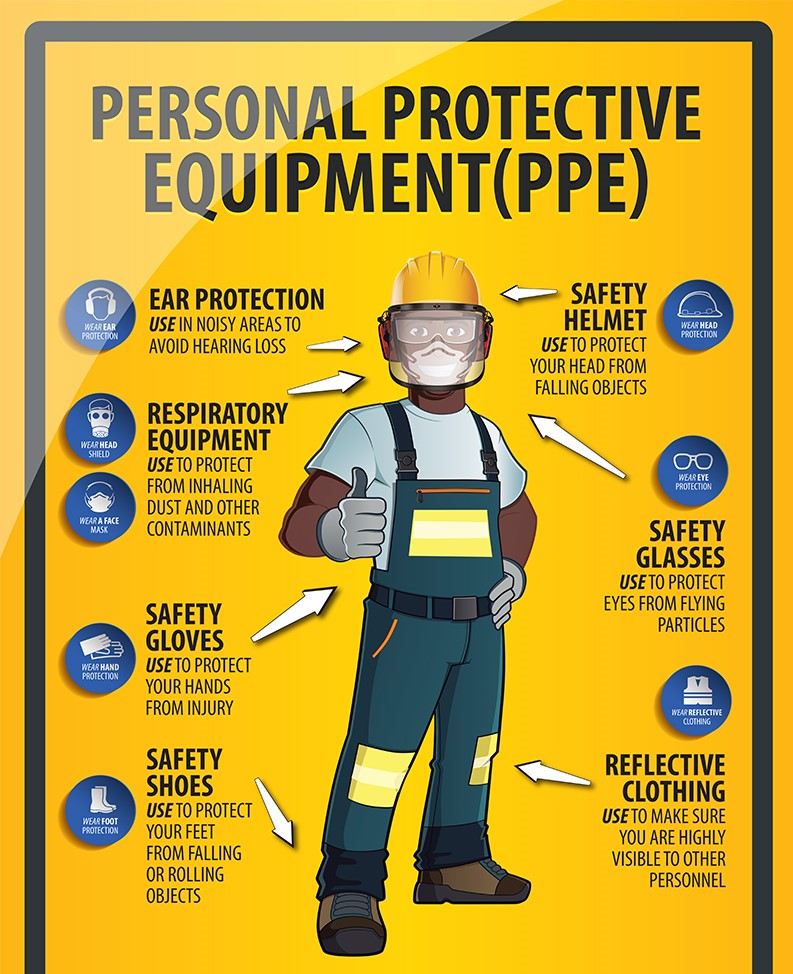Protective Clothing Requirements Are Identified And Protective Clothing Is Used

Personal Protective Equipment (PPE) and Personal Protective Clothing (PPC) are used temporarily (until more effective hazard control techniques can be used) or as the last line of protection for workers against hazards. The PPE you use will depend on the work environment, the work conditions, and the process being performed.
Each piece of PPE has a specific use and may be made of specialized materials appropriate for one use, but not appropriate for another. For example, thick natural rubber gloves will protect the wearer from strong solutions of bleach for an eight-hour working day, but they will not protect them from ammonia hydroxide as effectively which is used as a cleaning agent and sanitiser in many household and industrial cleaners.
It is also important to remember that wearing the right PPE is important. PPE does not reduce workplace hazard nor does it guarantee permanent or total protection for the wearer. Simply having Personal Protective Equipment (PPE) available is not enough. In order to ensure the required level of protection:
- PPE should be selected considering the type of hazard and the degree of protection required.
- PPE should be useable in the presence of other workplace hazards.
- Users should be trained in the proper use and fit of the PPE.
- PPE should be properly stored and maintained.
- If PPE is found to be defective, it should be discarded and replaced.
Wherever people work, there may be a need for PPE. This slide shows some typical jobs, hazards and PPE requirements for various jobs.
Click here to view a video that explains personal protective equipment.